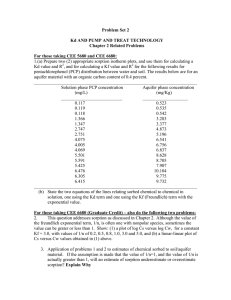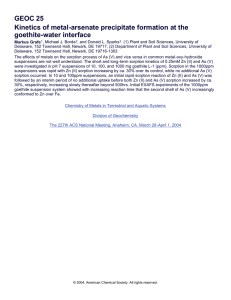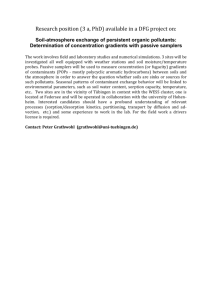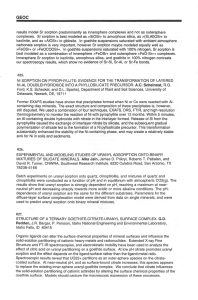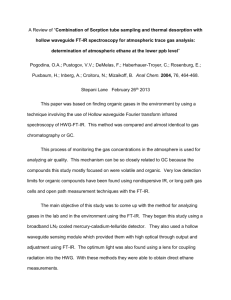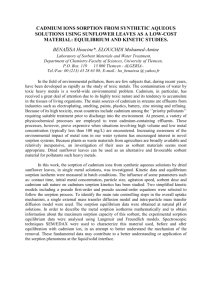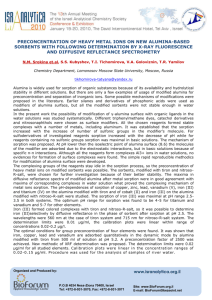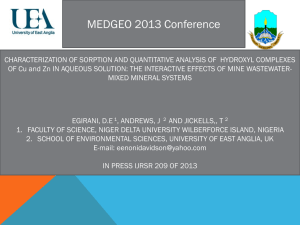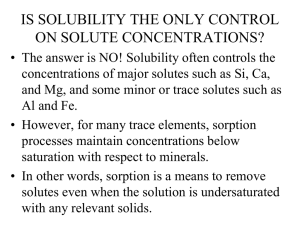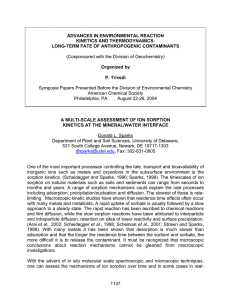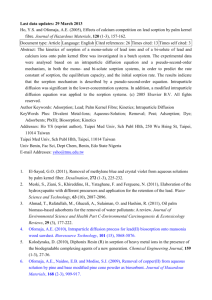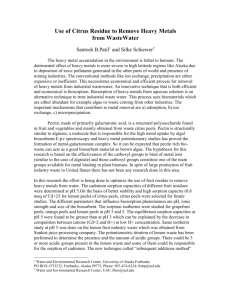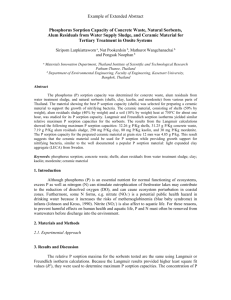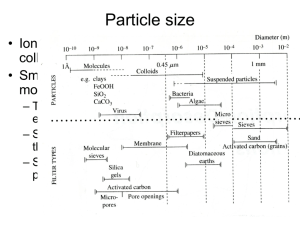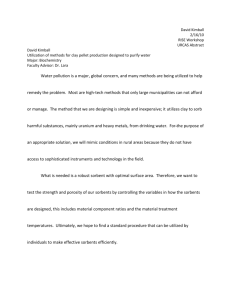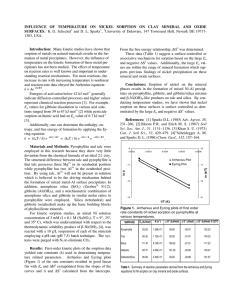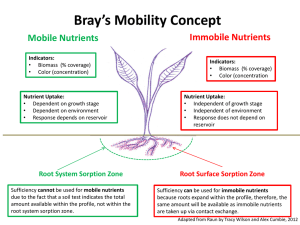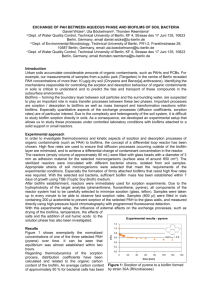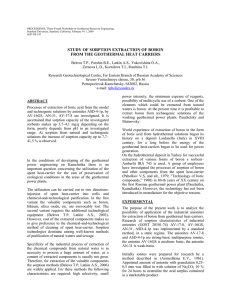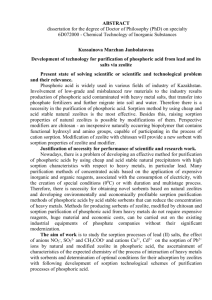III MODELING
advertisement
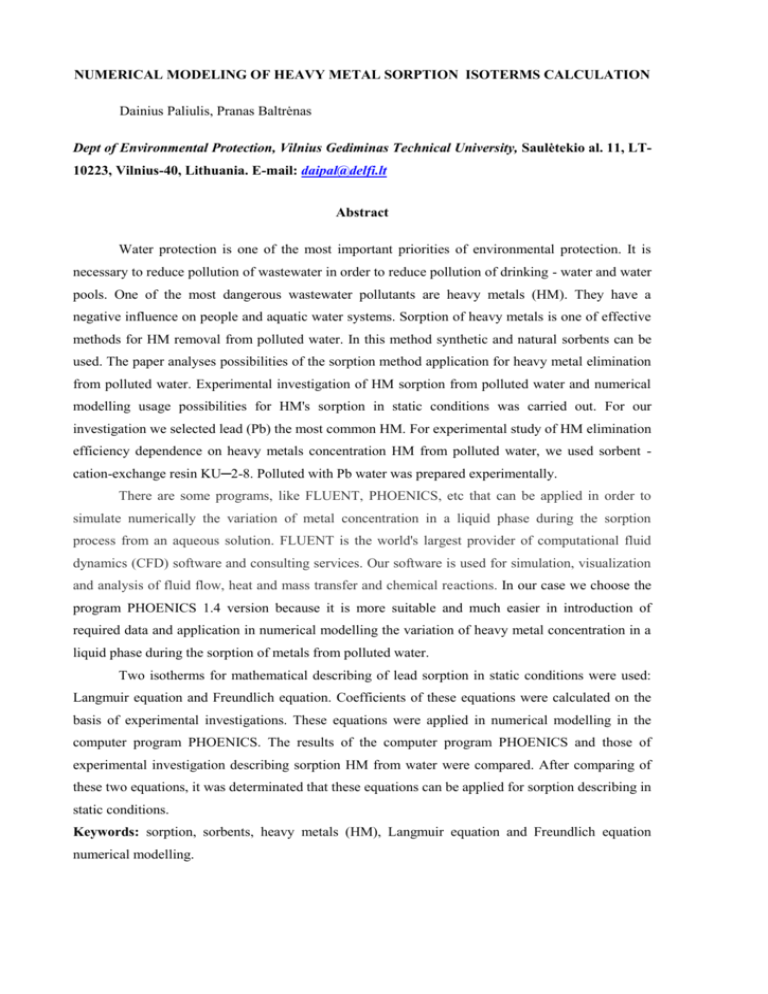
NUMERICAL MODELING OF HEAVY METAL SORPTION ISOTERMS CALCULATION Dainius Paliulis, Pranas Baltrėnas Dept of Environmental Protection, Vilnius Gediminas Technical University, Saulėtekio al. 11, LT10223, Vilnius-40, Lithuania. E-mail: daipal@delfi.lt Abstract Water protection is one of the most important priorities of environmental protection. It is necessary to reduce pollution of wastewater in order to reduce pollution of drinking - water and water pools. One of the most dangerous wastewater pollutants are heavy metals (HM). They have a negative influence on people and aquatic water systems. Sorption of heavy metals is one of effective methods for HM removal from polluted water. In this method synthetic and natural sorbents can be used. The paper analyses possibilities of the sorption method application for heavy metal elimination from polluted water. Experimental investigation of HM sorption from polluted water and numerical modelling usage possibilities for HM's sorption in static conditions was carried out. For our investigation we selected lead (Pb) the most common HM. For experimental study of HM elimination efficiency dependence on heavy metals concentration HM from polluted water, we used sorbent cation-exchange resin KU─2-8. Polluted with Pb water was prepared experimentally. There are some programs, like FLUENT, PHOENICS, etc that can be applied in order to simulate numerically the variation of metal concentration in a liquid phase during the sorption process from an aqueous solution. FLUENT is the world's largest provider of computational fluid dynamics (CFD) software and consulting services. Our software is used for simulation, visualization and analysis of fluid flow, heat and mass transfer and chemical reactions. In our case we choose the program PHOENICS 1.4 version because it is more suitable and much easier in introduction of required data and application in numerical modelling the variation of heavy metal concentration in a liquid phase during the sorption of metals from polluted water. Two isotherms for mathematical describing of lead sorption in static conditions were used: Langmuir equation and Freundlich equation. Coefficients of these equations were calculated on the basis of experimental investigations. These equations were applied in numerical modelling in the computer program PHOENICS. The results of the computer program PHOENICS and those of experimental investigation describing sorption HM from water were compared. After comparing of these two equations, it was determinated that these equations can be applied for sorption describing in static conditions. Keywords: sorption, sorbents, heavy metals (HM), Langmuir equation and Freundlich equation numerical modelling.
